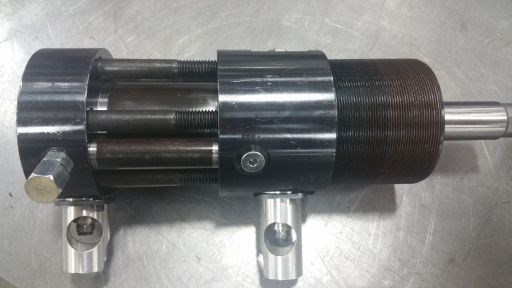The Designer's Edge: Self Locking Cylinders
Today Randy reviews the benefits of using a self-locking cylinder when space is not available for the required bore size to counteract cavity pressure.

Hydraulic cylinder with an internal mechanical lock.
A self-locking cylinder is a good option when space is not available for the required bore size to counteract cavity pressure. This cylinder type prevents blow back with a mechanical lock on set position that locks the hydraulic piston. They are reliable with minimal maintenance, if used properly. They do have set/pull pressure specs that must be followed. The mechanical lock feature does demand timing with your component in the set position. This is a very simple process during mold installation.
Hydraulics are also used instead of knockout bars for ejection in some cases, particularly when ejection stroke is more than the machine has available. Some molders also use hydraulic eject to reduce setup time versus a tied-in knock. Others use hydraulics in reverse ejection situations where the ejector plates are on the stationary mold half. Reverse ejection is used as per part criteria or when the moving mold half requires a Class A surface (no ejector pin marks or direct gating). There are cases where hydraulics are not needed with reverse ejection, but do require mechanical features, such as latch locks.
I personally would prefer not to have hydraulic ejection on the moving half. This is purely from a tooling perspective, as hydraulics can increase maintenance with the extra components. Also hydraulic oil is not pleasant to clean up. However, there are always exceptions and if hydraulic cylinders are necessary to stroke the ejector plates, a geared flow control device should be used. This ensures that the cylinders are getting the same amount of oil and moving at the exact same time. This prevents any cocking of the plates.
When using hydraulics for core pulls that have shut-offs on the cavity, the shut-off should not be the positive stop that takes all the impact of the hydraulic pressure in the set position. To protect shut-offs, it is better to have a step or ledge on your component that bottoms out at the same time as the shut-off. Shut-offs may also need to be vented and without the added protection you will just coin it shut over time.








.jpg;maxWidth=300;quality=90)






